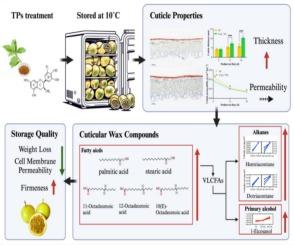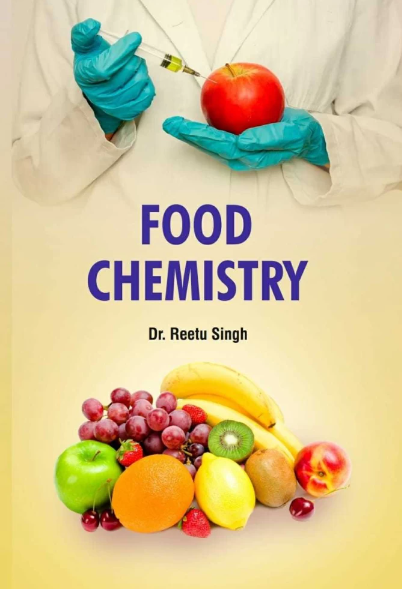Tea polyphenols coating improves physiological properties, microstructure and chemical composition of cuticle to suppress quality deterioration of passion fruit during cold storage
IF 8.5
1区 农林科学
Q1 CHEMISTRY, APPLIED
引用次数: 0
Abstract
The plant cuticle plays a crucial role in modulating postharvest quality and extending shelf life of horticultural crops. Passion fruit often suffers from quality degradation primarily due to peel wrinkling after harvest. Tea polyphenols (TPs) hold potential for enhancing postharvest preservation. However, the specific effects of TPs coating on preservation of passion fruit, as well as the underlying mechanisms involving cuticle regulation, have not been thoroughly investigated. This study demonstrated that treating ‘Qinmi no.9’ passion fruit with TPs at a concentration of 0.1 g L−1 significantly mitigates weight loss, maintains firmness, and reduces cell membrane permeability during storage at 10 °C. Scanning electron microscopy (SEM) and transmission electron microscopy (TEM) revealed that TPs treatment notably enhances cuticle thickness and structural integrity. Furthermore, gas chromatography–mass spectrometry (GC–MS) and metabolomics analyses indicated that TPs treatment obviously promotes the accumulation of palmitic acid, stearic acid, and their derivatives—primarily 12-Octadecenoic acid and 10(E)-Octadecenoic acid—as well as increases the levels of 11-Octadecenoic acid, primary alcohols such as 1-Eicosanol, and long-chain alkanes (including C31 and C32 alkanes) in the fruit peel cuticle. These biochemical changes contribute to the quality maintenance of passion fruit during cold storage. The findings suggest that TPs treatment is a promising biological strategy for extending shelf life and mitigating quality degradation by regulating cuticle metabolism in postharvest passion fruit.


茶多酚涂层可改善角质层的生理特性、微观结构和化学成分,从而抑制百香果在冷藏期间的品质下降
植物角质层在调节园艺作物采后质量和延长货架期方面起着至关重要的作用。百香果通常会出现质量下降,主要原因是采收后果皮起皱。茶多酚(TPs)具有提高采后保鲜的潜力。然而,茶多酚涂层对百香果保鲜的具体影响以及涉及角质层调节的内在机制尚未得到深入研究。本研究表明,用 0.1 g L-1 浓度的 TPs 处理 "秦蜜 9 号 "百香果,可显著减轻其在 10 °C 贮藏期间的重量损失,保持其硬度,并降低细胞膜的渗透性。扫描电子显微镜(SEM)和透射电子显微镜(TEM)显示,TPs 处理可明显增强角质层厚度和结构完整性。此外,气相色谱-质谱(GC-MS)和代谢组学分析表明,TPs 处理明显促进了果皮角质层中棕榈酸、硬脂酸及其衍生物(主要是 12-十八碳烯酸和 10(E)- 十八碳烯酸)的积累,并增加了果皮角质层中 11-十八碳烯酸、伯醇(如 1-二十醇)和长链烷烃(包括 C31 和 C32 烷烃)的含量。这些生化变化有助于在冷藏期间保持百香果的品质。研究结果表明,通过调节采后百香果的角质层新陈代谢,TPs 处理是延长货架期和缓解质量退化的一种很有前途的生物策略。
本文章由计算机程序翻译,如有差异,请以英文原文为准。
求助全文
约1分钟内获得全文
求助全文
来源期刊

Food Chemistry
工程技术-食品科技
CiteScore
16.30
自引率
10.20%
发文量
3130
审稿时长
122 days
期刊介绍:
Food Chemistry publishes original research papers dealing with the advancement of the chemistry and biochemistry of foods or the analytical methods/ approach used. All papers should focus on the novelty of the research carried out.
 求助内容:
求助内容: 应助结果提醒方式:
应助结果提醒方式:


